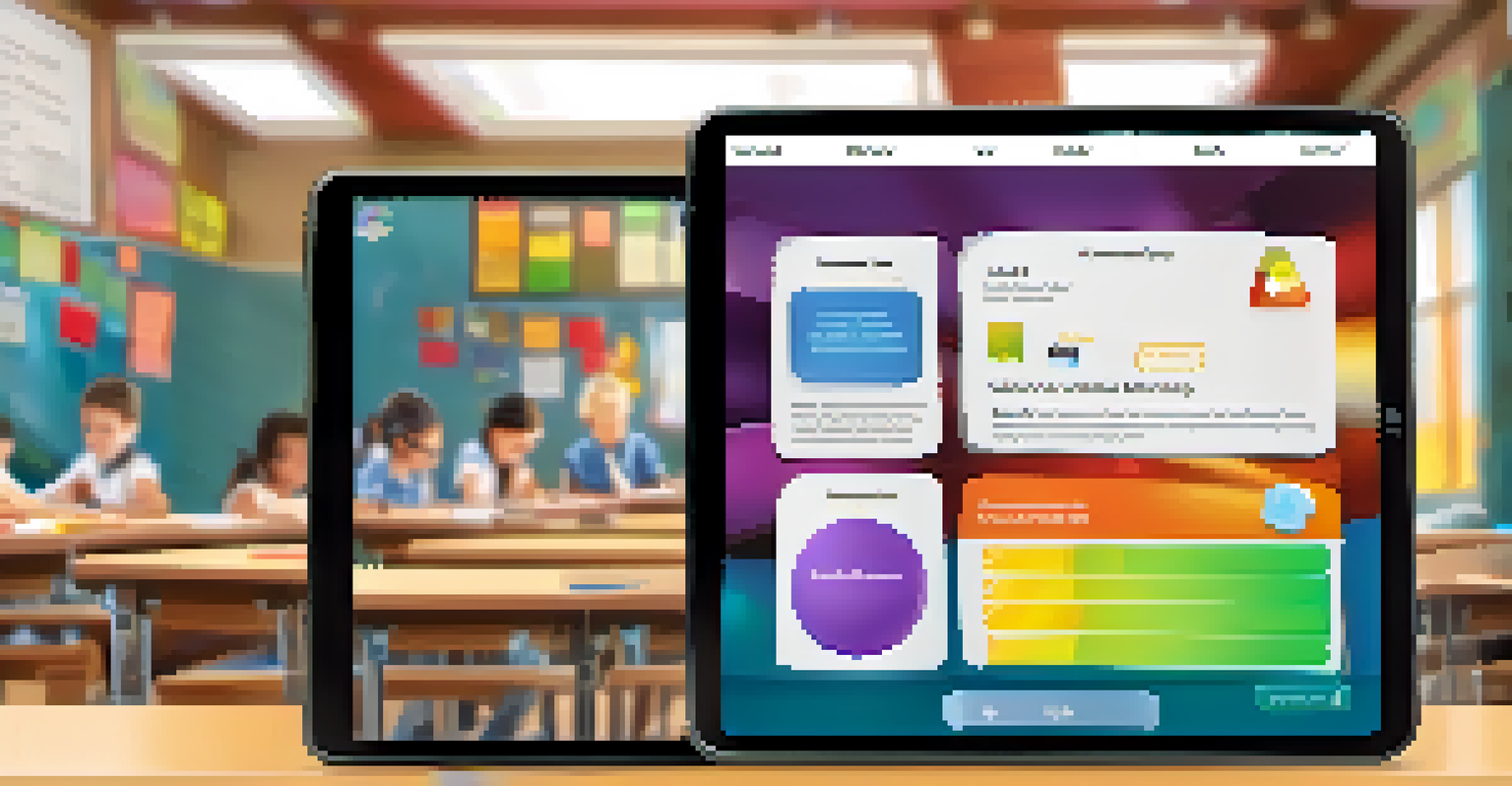Digital Literacy Assessment: Measuring Skills and Progress

Understanding Digital Literacy: What It Means Today
Digital literacy encompasses a range of skills that allow individuals to navigate, evaluate, and create information using digital technologies. In today's tech-driven world, it’s not just about being able to use a computer; it includes critical thinking and the ability to communicate effectively online. As our reliance on technology grows, so does the importance of digital literacy in both personal and professional contexts.
Digital literacy is not just about knowing how to use technology; it's about understanding how to use technology effectively and ethically in daily life.
Think of digital literacy like learning to ride a bike. Initially, you need to understand how to balance, steer, and brake. Similarly, digital literacy requires foundational skills, but it also evolves as technology advances. People must continuously adapt to new tools and platforms, which can sometimes feel overwhelming, especially for those who are less tech-savvy.
In essence, digital literacy isn’t just a skill set; it’s a mindset. It encourages lifelong learning and adaptability, allowing individuals to thrive in an increasingly digital world. This foundational understanding sets the stage for assessing one's digital literacy skills effectively.
The Importance of Assessing Digital Literacy Skills
Assessing digital literacy skills is crucial for identifying strengths and areas for improvement. Just like a fitness assessment helps you understand your physical health, a digital literacy assessment reveals how well someone can utilize technology. This information is vital for educators, employers, and individuals looking to enhance their skills.

Moreover, regular assessments can track progress over time. For instance, if a student starts with basic skills, periodic evaluations can showcase growth and highlight specific areas needing attention. This not only motivates learners but also provides educators with valuable insights into their teaching effectiveness.
Digital Literacy is Essential Today
In our technology-driven world, digital literacy encompasses critical skills for effective communication and information creation.
Ultimately, assessing digital literacy is about empowering individuals to navigate the digital landscape confidently. By understanding their skill levels, they can set achievable goals and work towards becoming more proficient, leading to better opportunities and outcomes in their personal and professional lives.
Types of Digital Literacy Assessments Available
There are various methods to assess digital literacy, ranging from formal tests to informal evaluations. Standardized assessments often provide a comprehensive overview of an individual's capabilities, covering areas like online research, digital communication, and content creation. These assessments can also be tailored to specific audiences, such as students or professionals.
The ability to access, analyze, evaluate, and create information in a variety of forms is the foundation of digital literacy.
On the other hand, informal assessments, such as self-evaluations or peer reviews, can offer valuable insights without the pressure of formal testing. These methods encourage reflection and discussion among peers, fostering a collaborative learning environment. For example, a group project can reveal how well individuals work together using digital tools.
Ultimately, the choice of assessment should align with the goals of the learners and the context in which they operate. By understanding the various assessment types available, individuals and organizations can select the methods that best suit their needs and objectives.
Creating a Digital Literacy Assessment Framework
A well-structured assessment framework is key to effectively measuring digital literacy skills. This involves establishing clear objectives, determining the skills to be assessed, and choosing appropriate assessment tools. For instance, if the goal is to evaluate online research skills, the assessment might involve tasks like finding credible sources or distinguishing between fact and opinion.
Incorporating a variety of assessment types can enhance the framework. Mixing quizzes, practical assignments, and real-world scenarios can provide a more holistic view of a learner's capabilities. This diversity not only keeps assessments engaging but also allows for a deeper understanding of how individuals apply their skills in different contexts.
Assessing Skills Enhances Growth
Regular assessments of digital literacy skills empower individuals to identify strengths and set achievable goals for improvement.
Finally, it’s essential to ensure that the assessment framework is flexible and adaptable. As technology evolves, so do the skills required to navigate it effectively. Regularly updating the framework based on emerging trends and feedback from participants ensures that assessments remain relevant and effective.
Using Technology to Facilitate Digital Literacy Assessments
Technology plays a pivotal role in streamlining digital literacy assessments. Online platforms can host assessments, making them accessible for a wider audience. For example, learning management systems (LMS) allow educators to create, distribute, and grade assessments efficiently, saving time and resources.
Additionally, technology can provide instant feedback, helping learners understand their performance in real-time. This immediate response can be particularly beneficial for skill development, as it allows individuals to correct mistakes and reinforce learning promptly. Imagine getting instant feedback on a quiz you just took; it promotes a more engaging and interactive learning experience.
Moreover, data analytics tools can track progress over time, offering valuable insights into a learner's development. By analyzing trends and patterns, educators can personalize their approach and provide targeted support, ensuring that learners receive the guidance they need to succeed.
Challenges in Assessing Digital Literacy Skills
While assessing digital literacy is essential, it is not without its challenges. One significant hurdle is the rapid pace of technological change, which can make assessments quickly outdated. For example, a tool that was popular last year may be irrelevant today, so ensuring that assessments reflect current technologies is crucial.
Another challenge is the varying levels of access to technology among different populations. Not everyone has the same resources or opportunities to develop their digital skills, which can lead to discrepancies in assessment outcomes. Addressing these disparities is vital for creating a fair and inclusive assessment process.
Technology Facilitates Assessments
Using technology in assessments streamlines the process, provides instant feedback, and allows for personalized learning experiences.
Lastly, there can be a tendency to focus too much on technical skills while neglecting critical thinking and problem-solving abilities. Assessments should strive to encompass a broader range of skills that reflect the true essence of digital literacy, ensuring that individuals are well-equipped to navigate the complexities of the digital world.
Future Trends in Digital Literacy Assessment
As technology continues to evolve, so will the landscape of digital literacy assessments. One emerging trend is the integration of artificial intelligence (AI) in assessments, which can tailor questions based on a learner's previous responses. This personalized approach not only enhances engagement but also allows for a more accurate measure of an individual's capabilities.
Additionally, gamification is gaining traction as a way to make assessments more engaging. By incorporating game-like elements, such as points, levels, and challenges, assessments can become more enjoyable and motivating for learners. Picture a scenario where you earn badges for completing tasks; it transforms the assessment experience into a fun and interactive journey.

Finally, the growing focus on soft skills, such as collaboration and communication, will likely shape future assessments. As workplaces increasingly value these competencies, assessments that evaluate how well individuals work in teams or communicate effectively online will become more prevalent. Embracing these trends will help ensure that digital literacy assessments remain relevant and impactful.